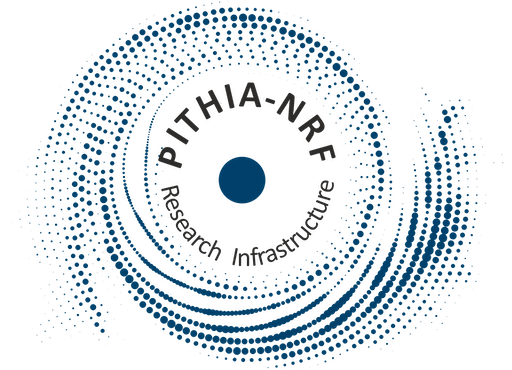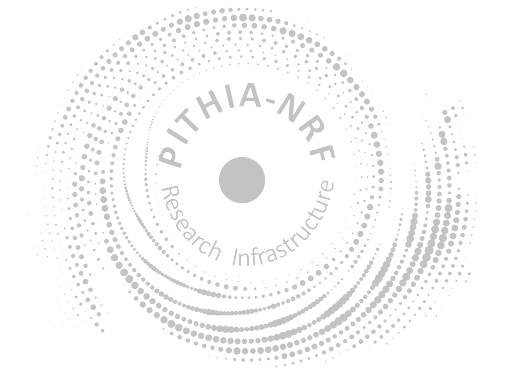<?xml version="1.0" encoding="UTF-8"?>
<DataCollection xmlns="https://metadata.pithia.eu/schemas/2.2" xmlns:gmd="http://www.isotc211.org/2005/gmd" xmlns:om="http://www.opengis.net/om/2.0" xmlns:xlink="http://www.w3.org/1999/xlink" xmlns:xsi="http://www.w3.org/2001/XMLSchema-instance" xsi:schemaLocation="https://metadata.pithia.eu/schemas/2.2 https://metadata.pithia.eu/schemas/2.2/pithia.xsd">
<om:phenomenonTime/>
<om:resultTime/>
<om:procedure xlink:href="https://metadata.pithia.eu/resources/2.2/process/lgdc/CompositeProcess_RayTRIX-CQP"/>
<om:observedProperty/>
<om:featureOfInterest>
<FeatureOfInterest>
<namedRegion xlink:href="https://metadata.pithia.eu/ontology/2.2/featureOfInterest/Earth_HighLatitude_Subauroral"/>
<namedRegion xlink:href="https://metadata.pithia.eu/ontology/2.2/featureOfInterest/Earth_HighLatitude_Auroral"/>
<namedRegion xlink:href="https://metadata.pithia.eu/ontology/2.2/featureOfInterest/Earth_Ionosphere_E-Layer"/>
<namedRegion xlink:href="https://metadata.pithia.eu/ontology/2.2/featureOfInterest/Earth_Ionosphere_F2-Layer"/>
<namedRegion xlink:href="https://metadata.pithia.eu/ontology/2.2/featureOfInterest/Earth_Ionosphere_F1-Layer"/>
<namedRegion xlink:href="https://metadata.pithia.eu/ontology/2.2/featureOfInterest/Earth_MidLatitudes"/>
<namedRegion xlink:href="https://metadata.pithia.eu/ontology/2.2/featureOfInterest/Earth_LowAndEquatorialLatitudes"/>
</FeatureOfInterest>
</om:featureOfInterest>
<om:result/>
<identifier>
<PITHIA_Identifier>
<localID>DataCollection_RayTRIX-CQP</localID>
<namespace>pithia</namespace>
<version>1</version>
<creationDate>2022-02-02T15:00:00Z</creationDate>
<lastModificationDate>2025-07-03T14:35:00Z</lastModificationDate>
</PITHIA_Identifier>
</identifier>
<name>HF Signal Raytracing: RayTRIX-CQP, Oblique ionogram synthesizer with E, F1, F2 layer echo traces and MUFs, driven by IRTAM ionospheric nowcast</name>
<description>Ray Tracing through Realistic Ionosphere eXplorer (RayTRIX) collection contains
traces of remote high frequency signal propagating through E, F1, and F2 layers
of the ionosphere for a given arbitrary time and radio link with one transmitter
and one receiver. Also computed are values of the Maximum Usable Frequency (MUF)
for each layer, defined as the maximum frequency at which communication between
the end points of the given radio link is still possible. RayTRIX computes signal
flight time (dependent variable) as a function of the operating frequency
(independent variable). Computation is done using an analytical solution of the
signal propagation through a plasma layer of the quasi-parabolic (QP) shape.
RayTRIX-CQP represents the ionospheric channel as a composite of three QP descriptions
for E, F1, and F2 layers at the mid point of the given radio link. The CQP plasma
density profile is built by fitting QPs to the IRTAM assimilative model of the
real-time ionospheric weather, available via GAMBIT database portal at
https:/giro.uml.edu/GAMBIT.</description>
<type xlink:href="https://metadata.pithia.eu/ontology/2.2/computationType/AssimilativeModel"/>
<type xlink:href="https://metadata.pithia.eu/ontology/2.2/instrumentType/Ionosonde"/>
<project xlink:href="https://metadata.pithia.eu/resources/2.2/project/lgdc/Project_LGDC_RION"/>
<relatedParty>
<ResponsiblePartyInfo>
<role xlink:href="https://metadata.pithia.eu/ontology/2.2/relatedPartyRole/PointOfContact"/>
<party xlink:href="https://metadata.pithia.eu/resources/2.2/individual/lgdc/Individual_LGDC_Galkin"/>
</ResponsiblePartyInfo>
</relatedParty>
<relatedParty>
<ResponsiblePartyInfo>
<role xlink:href="https://metadata.pithia.eu/ontology/2.2/relatedPartyRole/DataProvider"/>
<party xlink:href="https://metadata.pithia.eu/resources/2.2/organisation/pithia/Organisation_LGDC"/>
</ResponsiblePartyInfo>
</relatedParty>
<collectionResults>
<source>
<OnlineResource>
<serviceFunction xlink:href="https://metadata.pithia.eu/ontology/2.2/serviceFunction/Numerical"/>
<serviceFunction xlink:href="https://metadata.pithia.eu/ontology/2.2/serviceFunction/Graphical"/>
<linkage>
<gmd:URL>https://giro.uml.edu/rix/oi-synth/</gmd:URL>
</linkage>
<name>RayTRIX Landing Page</name>
<protocol>HTTPS</protocol>
<description>
The RayTRIX landing page provides access to online RayTRIX-CQP synthesizer of numerical and display products of the oblique-incidence ionogram
on given radio link.
</description>
<dataFormat xlink:href="https://metadata.pithia.eu/ontology/2.2/resultDataFormat/text-html"/>
</OnlineResource>
</source>
</collectionResults>
<dataLevel xlink:href="https://metadata.pithia.eu/ontology/2.2/dataLevel/L4"/>
<qualityAssessment>
<dataQualityFlag xlink:href="https://metadata.pithia.eu/ontology/2.2/dataQualityFlag/DQ0"/>
<metadataQualityFlag xlink:href="https://metadata.pithia.eu/ontology/2.2/metadataQualityFlag/MQ1"/>
<metadataQualityFlag xlink:href="https://metadata.pithia.eu/ontology/2.2/metadataQualityFlag/MQ2"/>
<metadataQualityFlag xlink:href="https://metadata.pithia.eu/ontology/2.2/metadataQualityFlag/MQ3"/>
<metadataQualityFlag xlink:href="https://metadata.pithia.eu/ontology/2.2/metadataQualityFlag/MQ4"/>
<metadataQualityFlag xlink:href="https://metadata.pithia.eu/ontology/2.2/metadataQualityFlag/MQ9"/>
</qualityAssessment>
<permission xlink:href="https://metadata.pithia.eu/ontology/2.2/licence/LGDC_SpaceDataPolicies"/>
</DataCollection>

